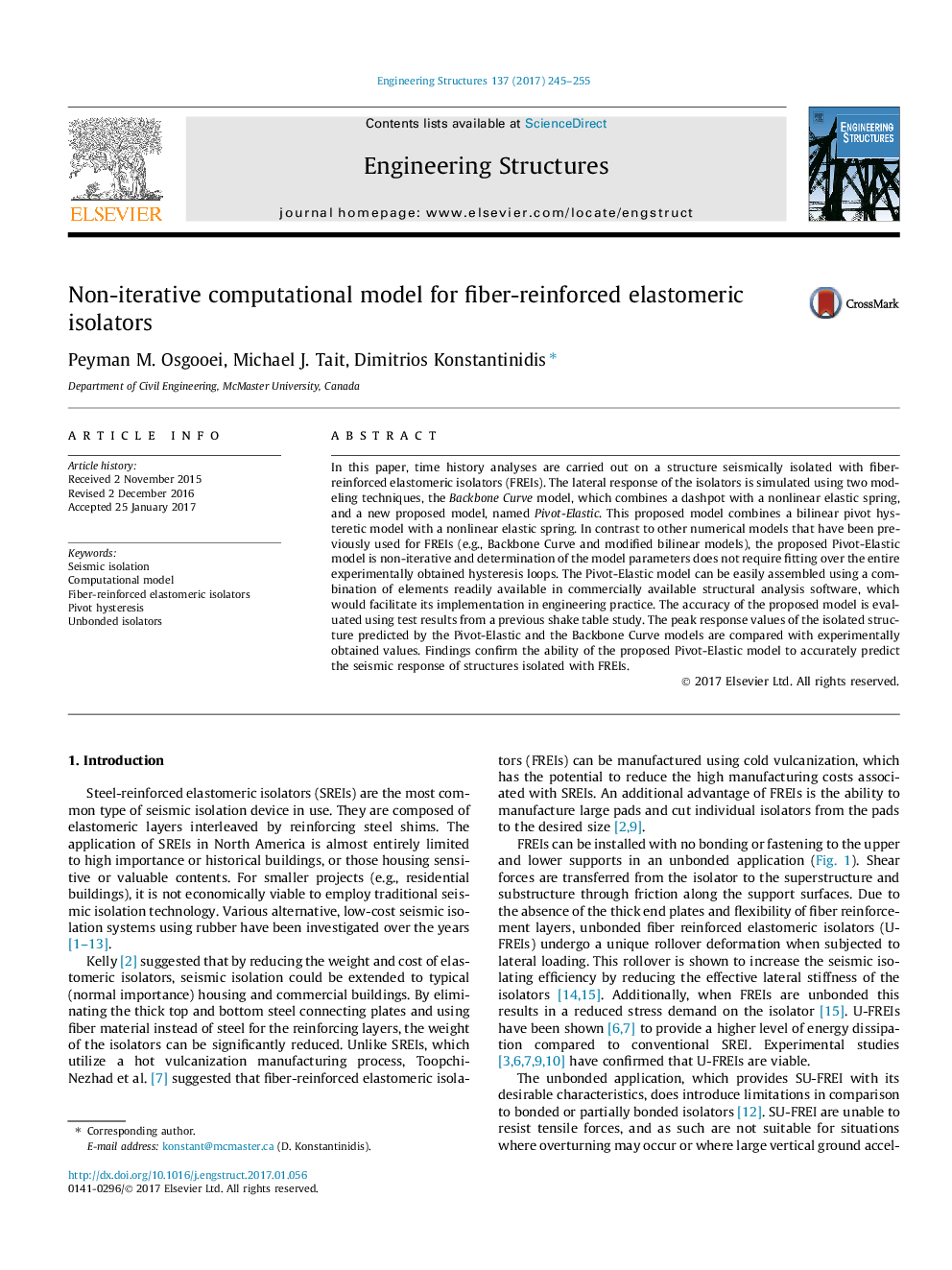| Article ID | Journal | Published Year | Pages | File Type |
|---|---|---|---|---|
| 4920298 | Engineering Structures | 2017 | 11 Pages |
Abstract
In this paper, time history analyses are carried out on a structure seismically isolated with fiber-reinforced elastomeric isolators (FREIs). The lateral response of the isolators is simulated using two modeling techniques, the Backbone Curve model, which combines a dashpot with a nonlinear elastic spring, and a new proposed model, named Pivot-Elastic. This proposed model combines a bilinear pivot hysteretic model with a nonlinear elastic spring. In contrast to other numerical models that have been previously used for FREIs (e.g., Backbone Curve and modified bilinear models), the proposed Pivot-Elastic model is non-iterative and determination of the model parameters does not require fitting over the entire experimentally obtained hysteresis loops. The Pivot-Elastic model can be easily assembled using a combination of elements readily available in commercially available structural analysis software, which would facilitate its implementation in engineering practice. The accuracy of the proposed model is evaluated using test results from a previous shake table study. The peak response values of the isolated structure predicted by the Pivot-Elastic and the Backbone Curve models are compared with experimentally obtained values. Findings confirm the ability of the proposed Pivot-Elastic model to accurately predict the seismic response of structures isolated with FREIs.
Keywords
Related Topics
Physical Sciences and Engineering
Earth and Planetary Sciences
Geotechnical Engineering and Engineering Geology
Authors
Peyman M. Osgooei, Michael J. Tait, Dimitrios Konstantinidis,
